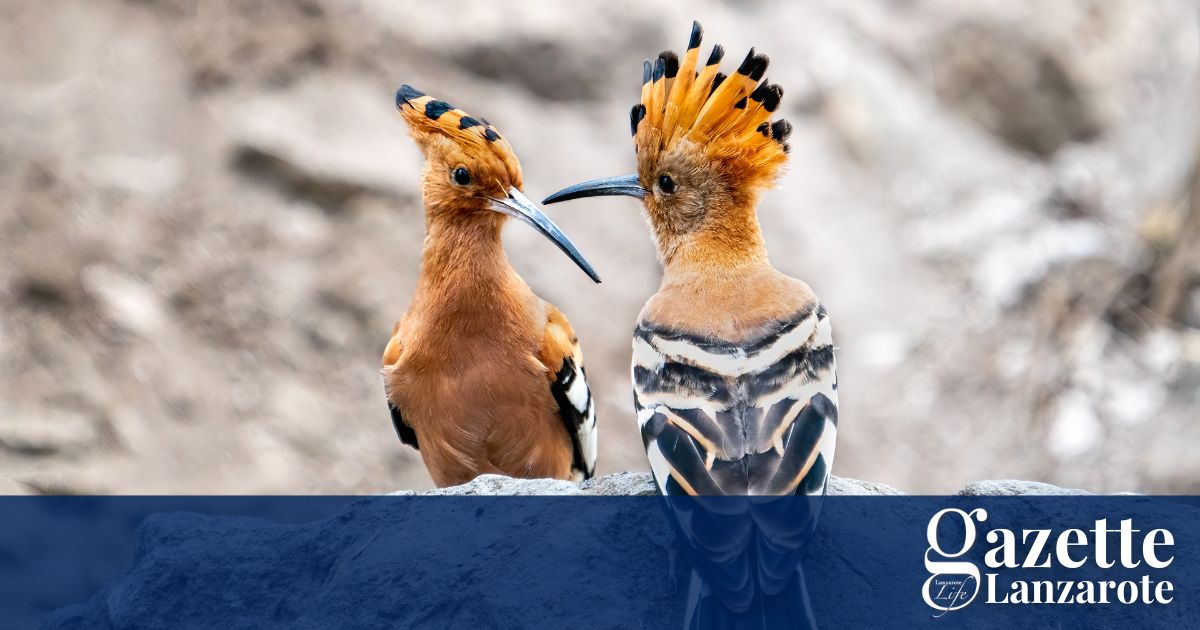The hoopoe is one of the most distinctive and unforgettable birds on Lanzarote – once seen, never forgotten.
It can happen anywhere on Lanzarote – a sudden flurry of sandy pink and a flash of black and white alerts you to the presence of a lovely bird, dipping through the air as it flies. For locals, it’s a normal experience, but for visitors it’s something magical – an exotic, elegant, crested creature whose name – hoopoe – is as evocative as its appearance.
Like the cuckoo, the hoopoe is a bird that appears to have named itself. Its latin name, Upupa epops, and almost all its other names echo its distinctive, repeated call, three or four notes almost as low as an owl’s hoot. In Spain, it is called the abubilla, and on the Canaries it is also known as the apupú.
The hoopoe is one of the most handsome birds you will see on Lanzarote, a gorgeous shade of cinnamon or rose-pink on its breast or upper body, with a bold black-and-white barred wings and tail. An elegantly curved beak adds to the spectacle, but the hoopoe’s most distinctive feature is undoubtedly its crest, or crown, of head feathers, that it can raise or lower at will.
The movement of the bird is also distinctive, as the hoopoe flies with an easily recognisable dipping flight, appearing to bounce along as it travels.
However, the beauty of the bird is not always matched by its habits. Hoopoe nests are famously dirty – an effective strategy at keeping predators away. Adults as well as nestlings produce a foul-smelling liquid to deter predators, and the chicks will even shoot their faeces at intruders if disturbed.
Hoopoes require flat, open land to hunt and feed on the insects and small creatures that make up their diet, and also require vertical locations such as trees, old buildings or cliffs on which to build their nests. On Lanzarote, they can be seen in almost every open area, even in towns and resorts, and many of them nest in palm trees or the abandoned walls of terrace farmers. Hoopoes are more common on the eastern Canary Islands than on the western islands, probably because the semi-desert conditions here are so well-suited to them.
Hoopoes are regarded as a friendly bird by gardeners and farmers, feasting on the pests and insects that would otherwise attack crops. But the sight of a hoopoe is almost certain to cheer anyone up – especially visitors and residents from northern climes who can barely believe their luck in seeing such a magnificent bird.












Leave a Reply
Want to join the discussion?Feel free to contribute!